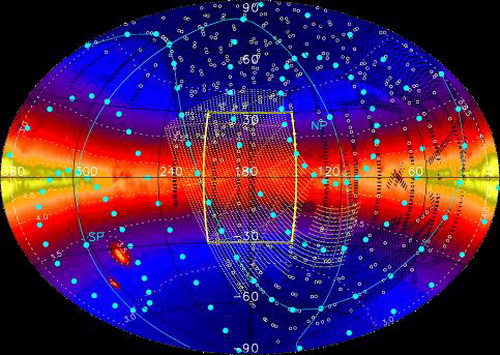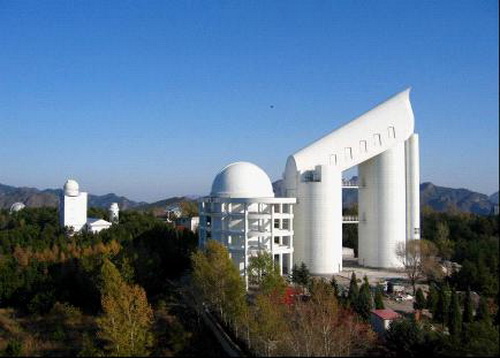With the generous support of the Purple Mountain Astronomical Observatory, the National Astronomical Observatories and the National Natural Science Foundation, in a milestone development, a team led by Professor Xiaowei Liu from the Department of Astronomy and the Kavli Institute for Astronomy and Astrophysics of Peking University, have recently completed the data collection of a large CCD Photometric Survey of the Galactic Anti-center, utilizing the1.04/1.20m Xuyi Schmidt Telescope. The survey has been carried out in collaboration with Professor Haibin Zhao and Jinsheng Yao of the Purple Mountain Astronomical Observatory which owns and operates the Xuyi Near Earth Object Observatory.
The Xuyi Schmidt Photometric Survey will provide positions and photometric data and input catalog for the forthcoming Digital Sky Survey of the Galactic Anti-center to be carried with the newly built national key astronomical observing facility, the Guoshoujing Telescope, currently under commissioning. Utilizing the 4,000 fiber afforded by the Guoshoujing Telescope, the survey will eventually obtain intermediate resolution optical spectra for a statistically complete sample of about four million stars distributed in a contiguous sky area of over three thousand square degrees in the direction of the Galactic anti-center.
The Xuyi Schmidt photometric survey images, in three colors g-, r- and i-band used by Sloan Digital Sky Survey, a sky area of over five thousand square degrees centered on the Galactic anti-center, plus an extension of over 300 square degrees to the area of the Andromeda Galaxy (M 31) and the Triangulum Pinwheel Galaxy of the Local Group. Preliminary data analyses show that the survey yields an astrometric accuracy of 0.1 seconds of arc and a photometric accuracy of 1 - 2 per cent, comparable to the Sloan Digital Sky Survey. The survey reaches a limiting magnitude of 20 and is expected to yield a catalog of over 100 million Galactic stars.
Our own Milky Way is an archetypical giant spiral galaxy or disk galaxy. The disk, the defining component of the Milky Way, contains most of the baryonic matter and essentially all the angular momentum of the galaxy. Revealing the formation and evolution history of disk galaxies in the bottom-up galaxy formation paradigm of the Lambda-CDM dominated cosmological framework, i.e. how a disk galaxy like our own assembled from pieces of pre-galactic substructures and acquired its characteristic morphology, structure and chemical and kinematic properties (the "grand design") is one of the most intriguing astrophysical problems of the 21st century. The Xuyi Schmidt photometric survey and the followup spectroscopic survey with the Guoshoujing Telescope will provide a huge data set to tackle this forefront problem. Its successful completion will signify the arrival of Chinese astronomers at the central platform on the global stage and a transitional shift in world's center of gravity in observational astronomy.
Links:
DSS-GAC: A Digital Sky Survey of teh Galactic Anti-center: http://kiaa.pku.edu.cn/DSSGAC/news.html
Guoshoujing Telescope: http://www.lamost.org
Xuyi Near Earth Object Observatory: http://www.pmo.ac.cn/jgsz/gctz/xygcz/
Sloan Digital Sky Survey: http://www.sdss.org/
Figures:

1. The sky coverage of the Xuyi Schmidt Photometric Survey (the central yellow dotted area) and the followup Guoshoujing Telescope Spectroscopic Survey (yellow box at the center).

2. A g, r, i three band synthesized true color image obtained with the Xuyi Schmidt Telescope

3. The Xuyi Schmidt Telescope

4. The Guoshoujing Telescope













